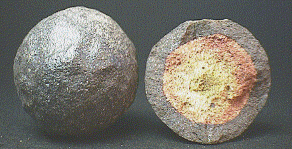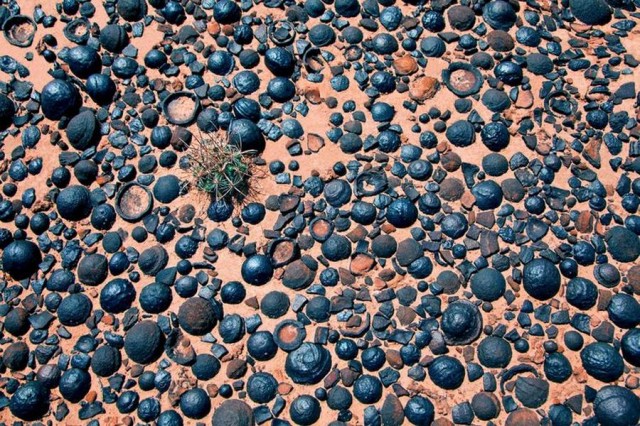Like Michael, I find your question a little unclear, but the crux of it seems to be this:
... does science have to conclude [that a specimen is] just a rock because the composition is entirely from earth minerals?
The answer is an emphatic no. There are lots of non-rocks out there, many of them manufactured by the (alleged) intelligence known as Homo sapiens. There is certainly no rule in geology that you have to exclude this possibility from consideration when identifying a rock, no matter what its composition. After all, we’re perfectly capable of manufacturing artefacts from earth minerals. In fact, when identifying a specimen, you have to consider the possibility that it's a product of intelligence: many enthusiastic amateurs have ended up collecting bits of brick, rubble, salt-lick, industrial slag and so forth by failing to do this :-).
One factor you mention in your question is the property
look to be manufactured by intelligence
This, it turns out, is often a less useful diagnostic than you might expect. Lots of manufactured specimens don't look particularly manufactured, especially after a bit of erosion and weathering. Conversely, lots of naturally occurring objects look remarkably regular and intricate.

On the left, objects manufactured by intelligence (slag from the Knight Smelter in Utah). On the right, a naturally occurring specimen of dodecahedral pyrite from Elba, Italy. So a subjective, purely visual judgement that something ‘looks manufactured’ or ‘doesn't look manufactured’ can be very misleading.
Your question also asks specifically about the ‘Moqui marbles’ of the Navajo Sandstone:
If Earth only had them would science say they are ancient artifacts from a past civilization?
The answer here is, again, a firm no. This is easy to check because, of course, the ‘Moqui marbles’ had been observed long before Opportunity landed on Mars in 2004, and at that time scientists did not regard them as ancient artifacts from a past civilization. For example, Chan et al. (2000) described them like this:
Small concretions of secondary iron oxide deposits are exclusively hematite-cemented sandstone. These concretions form all kinds of shapes from millimeters to centimeters in diameter, and cut across primary bedding structure. Some concretions are solid spherical balls around unknown nuclei; others are spherical rinds with plain red-stained, host rock interiors (lacking black-colored hematite cement on the inside). Concretions also exhibit forms that appear to have coalesced or joined (similar to two glued marbles), or exhibit a variety of other odd shapes (buttons, disks, irregular knobby forms to spiked-looking balls).
As you see, the authors identify these objects as concretions. (Also note that, although you claim that they're only "minutely" different in size and shape, the description here mentions a great deal of variation in both those properties.) Concretion is an extensively studied geological phenomenon which occurs across the globe. There’s no need to invoke an ‘intelligent manufacturer’ to explain it, whether or not concretions are found on other planets.
Chan, M. A., Parry, W. T., & Bowman, J. R. (2000). Diagenetic hematite and manganese oxides and fault-related fluid flow in Jurassic sandstones, southeastern Utah. AAPG bulletin, 84(9), 1281-1310.





